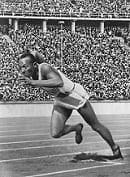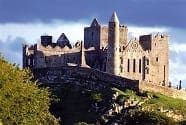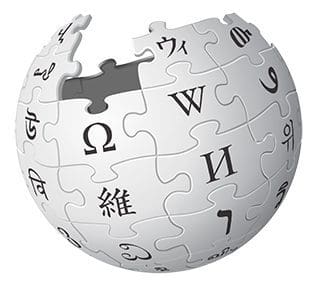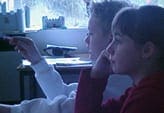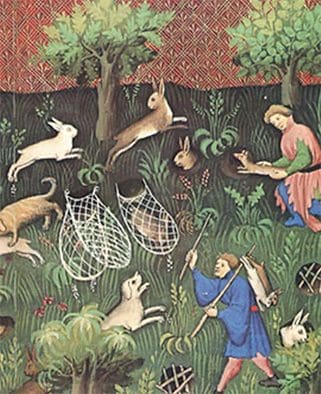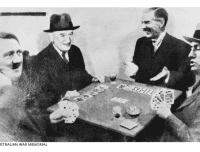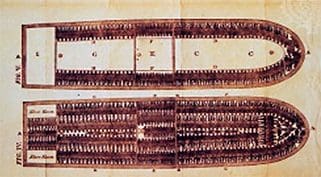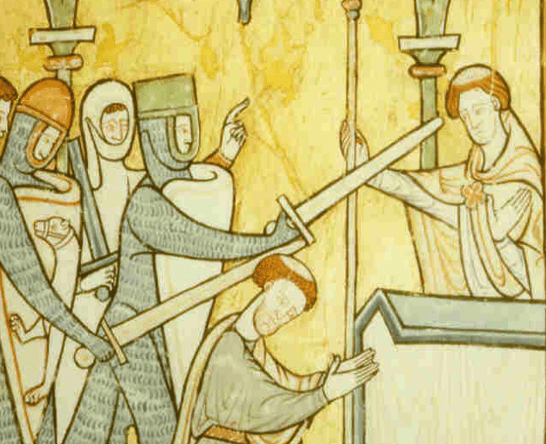
Working as historical advisers to a movie director, pupils attempt to reconstruct the scene of Becket’s death by cross-referencing and then evaluating a range of principally visual sources from the British Museum’s recent exhibition so that they can produce an historically accurate image to use as the film’s advertising poster.
To do this well, they have to compare the sources with most scholarly descriptions. Why are some images privileged over others?
Learning objectives
- Pupils grasp that historians construct narratives based on a range of sources
- Pupils learn the importance of cross-referencing to show that not all versions agree
- They grasp the importance of looking for corroborative evidence before making statements
- They learn to asking probing questions about provenance of sources to ascertain which sources are the most trustworthy.
Introduction
Set the scene. An upcoming movie director is making a new film about Henry and Becket. He is shortly going to be filming the scene of Becket’s death. The last film made about 50 years ago was panned by historians as being historically inaccurate, so pupils have been drafted in to give reliable historical advice and to ensure that the film’s advertising poster is historically accurate. But they must first gain the film directors’ trust, so they have to carry out a trial first. This is activity 1.
The crime scene
We are fortunate to have five eye-witness accounts of Becket’s murder, all of which broadly agree on the details of what took place. One key account was written by a monk named Edward Grim, who was so close to Becket during the skirmish that he was wounded by one of the knight’s swords. This gives substance to the activity and prevents pupils thinking that ‘we can never know’.
Step 1
Pupils in groups of 3 or 4 are given a dossier containing 9 images of the death of Becket. These have been deliberately chosen to broadly show the same features but with some clear differences too. (Alternatively, to save money copying multiples of the images, you can display single copies around the room as if an art gallery and give pupils clipboards on which to record their findings.)
Explain to the pupils that they are about to be employed by a film director. The film director is a busy man and is phoning from the US and has only a few minutes to work out if you are going to be any good at the task. As the teacher, you pretend to be him/her, with suitable Hollywood accent, of course! To see if the pupils are going to be any good, can they quickly (in just 2 minutes) give him 6 facts about the murder scene that he can use in his film poster which has to be made soon? If possible, have an audible clock running to create a sense of urgency so the task doesn’t drag, but at the same time they need to be accurate to win the contract to help the director so they can’t just guess.
The purpose of all this is, of course, to encourage cross-referencing and looking for corroborative evidence not just believing the first image they see. Some pupils will want to start thinking about why not all sources agree, but this is for later. For now, just get them motivated. It will probably work best if you give pairs of pupils 2 or 3 different images so they all get involved straightaway.
NB If using the art gallery approach, make sure that all pupils see all the images, perhaps working in pairs to give them confidence.
Step 2
So, staying in role as director you ask for a statement from each group. They should pick up points about where it seems to be happening, the number of knights, their weapons, the murder blow etc. Remember you are in a hurry as the director. You have the poster artist ready to start work and time costs money. So go over each point made, saying, “Are you absolutely sure about this? “When you in role are satisfied that they know what they are doing introduce a new element. Again staying in role, you have news that a new book has just been published by the leading expert on Becket. I wonder which of the 9 sources the historian seems to have used?
Step 3
Now out of role, issue RS1 which is the latest historical view but basically a simplified description of what most historians think the death scene was like, broken up into 10 separate statements. Staying in the same groups of 3 or 4, pupils now have to complete a data capture sheet RS2 which has the numbered historians statements on the left-hand side and a grid to be filled in on the right. The aim here is for pupils to gradually build up a picture of which sources seem to be used and which do not. So that pupils don’t see things in black and white extend the code from a tick for agrees, a cross for disagrees, to include two other options: a ? if not sure and N for ‘not enough evidence’. This is shown at the foot of RS2.
To prevent this part of the lesson being too time consuming, I have felt it advisable to ask pairs of pupils to be responsible for 2 sources each, putting one person in charge of ensuring that the form gets filled in correctly. Not all groups will finish at the same time, despite you bringing urgency to the task, so two additional questions are asked on RS2 concerning which sources seem to have been privileged and which largely ignored.
Step 4
Analysing the grid they have just created, pupils volunteer which sources seem most reliable. But why have some been used and not others? Ask for ideas which will initially focus on proximity to the event in time and place which is fine. What we want them to do now is to consider other possible factors, whilst accepting that they are still in Y7 and will probably not have been exposed to much source evaluation in most primary schools.
Step 5
Reveal the provenance of the trusted sources, principally the dates, on slide 8. What conclusions can we draw? Pupils might think that the one produced nearest the time is the most reliable, like water coming from the source of a river being purer. But if they look at source 9, the earliest, they will see that there are inaccuracies. This is an important stage in pupils’ history education when they try to establish criteria for reliability. They might discount source 7 as it seems to be written in French and is much more modern. Source 4 might be disbelieved as the knights seem to be wearing untypical clothes and carrying unusual style of weapons. All this means that pupils are at least looking for internal clues thinking what might be plausible. In many ways this is more helpful than any detailed work on the nature of the object on which the images appear though this must be discussed. Was it ever meant to be accurate?
Step 6
Having fully discussed the issues turn to RS3 which offers 10 possible criteria for believing a source.
Working in pairs, pupils quickly ascribe a number out of 10 for how important they think that criterion is. Hopefully they will draw on the ideas just discussed. There is no right answer here but some are clearly stronger than others. What matters is that YOU have a view on each so you build a shared understanding as the pupils progress to their next source evaluation lessons.
You might want to finish the lesson by reading Grim’s account Source: https://en.wikisource.org/wiki/Edward_Grim%27s_account_of_the_Murder_of_Thomas_Becket, though be careful as it is pretty gory stuff.

